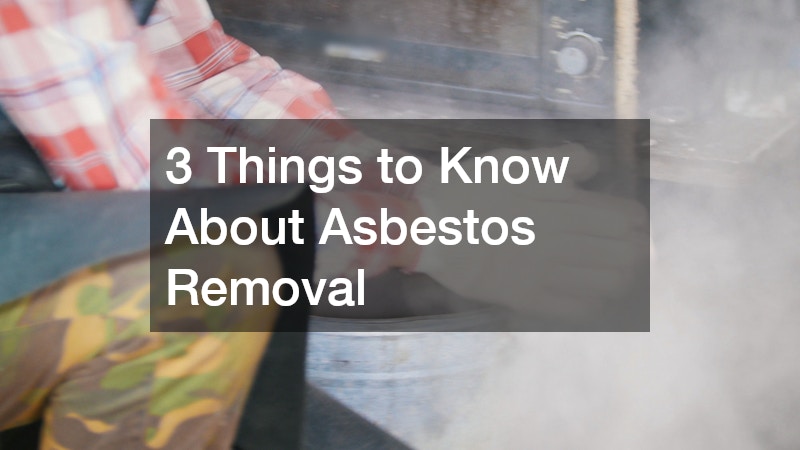
Asbestos removal is a critical process for maintaining health and safety in environments where asbestos may be present. Understanding the">
Asbestos removal is a critical process for maintaining health and safety in environments where asbestos may be present. Understanding the essentials can help homeowners and property managers navigate this complex subject. Many buildings constructed prior to the 1980s may contain asbestos materials, making awareness and knowledge essential for safe management.
Video Source
Proper handling and removal of asbestos not only protect the health of individuals but also contribute to the preservation of property value and compliance with legal standards.
Asbestos is a group of naturally occurring silicate minerals that have been widely used in construction and insulation due to their fire-resistant properties. These minerals have excellent insulative qualities and were utilized in a diverse range of building materials, from roofing shingles to floor tiles. However, what makes asbestos a significant concern is that when these materials deteriorate or are disturbed, they can release tiny fibers into the air, posing a risk of inhalation.
Exposure to asbestos fibers can lead to various serious health issues, including lung cancer, asbestosis, and mesothelioma, a rare but aggressive form of cancer. These diseases often take many years to develop, which can lead to a false sense of security among property owners, thinking that if they don’t see immediate effects, there is no danger. However, the long latency periods mean that even minor exposure can potentially result in severe health consequences later in life.
Awareness of these dangers is critical. The risk is particularly heightened for those involved in renovation or demolition of older buildings where asbestos materials might be present. For this reason, the Occupational Safety and Health Administration (OSHA) and the Environmental Protection Agency (EPA) have developed guidelines and regulations aimed at managing asbestos exposure. Understanding these dangers helps to promote a culture of safety and informed decision-making in property management and maintenance.
Identifying asbestos in your property typically requires careful inspection by certified professionals who have the training and expertise needed to handle potentially hazardous materials. While many homeowners might attempt to assess materials themselves, it is advised against due to the risks involved with improper handling or misidentification. Recognizable signs include older insulation materials, textured ceiling finishes, and certain types of flooring that were commonly made with asbestos.
The age of your property is an important factor in determining whether asbestos might be present. Homes built before the 1980s are particularly susceptible as asbestos was widely used during that time period. Moreover, specific materials, such as certain cement products, pipe insulation, and vinyl floor tiles, were known carriers of asbestos content. It is crucial to approach any disturbing of these materials with caution, knowing that even small disturbances can release harmful fibers.
If you suspect that your home or commercial building has asbestos-containing materials, immediately contact professionals for testing and assessment. They will take samples, analyze them for asbestos presence, and guide you on the next steps. Ignoring potential asbestos issues can lead to severe health risks and costly repairs later on, emphasizing the importance of due diligence in property maintenance.
The asbestos removal process is complex and typically involves several key steps: assessment, containment, removal, and disposal. Initially, a certified asbestos inspector will assess the property and identify locations of asbestos-containing materials. This assessment must be thorough to ensure that all asbestos is accounted for before any work begins.
Once identified, the next step is containment. This involves setting up physical barriers to isolate the work area, ensuring that any asbestos fibers cannot escape into the surrounding environment. Specialists utilize negative air pressure systems and air monitoring devices to ensure that the area remains safe during the removal process. It’s essential that only trained professionals handle these steps to guarantee compliance with safety regulations.
The removal itself follows strict governmental regulations designed to minimize risks. This involves carefully removing the asbestos materials and preparing them for disposal, which must also be conducted according to legal guidelines. Once removal is completed, thorough cleaning of the area and proper disposal of waste are the final steps, ensuring no trace of asbestos remains, reinforcing safety for current and future occupants.
When hiring a contractor for asbestos removal, it's essential to check for certifications and licenses specific to your region. Many states require specialized training and certifications for handling and removal of hazardous materials like asbestos. Be sure to ask for proof of certification and ensure that the contractor follows local regulations to guarantee a safe and compliant removal process.
Experience is another crucial aspect to consider. You should select a contractor who has a proven track record in asbestos removal. Inquiring about past projects can give insight into their expertise. Furthermore, reading reviews and testimonials from previous clients can help gauge the quality of service and reliability of the contractor.
In addition to experience and credentials, safety protocols are paramount. Ask about their procedures for containing asbestos and how they ensure the safety of both their workers and your property. Ensure the contractor has a detailed safety plan in place, including measures for personal protective equipment (PPE) and air monitoring during the removal process. This diligence can significantly reduce health risks associated with asbestos exposure.
Asbestos removal is an important and potentially hazardous task that requires professional expertise. Understanding the risks and processes involved is vital for property owners looking to maintain a safe environment. By recognizing the dangers of asbestos, identifying its presence, understanding the removal process, and carefully selecting a qualified contractor, property owners can make informed decisions that ensure safety for themselves and their occupants.
